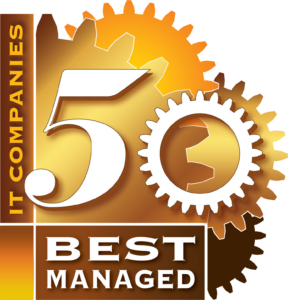
The Differences Between IT Management & Support Models
The Differences Between IT Management & Support Models
Every organisation has a few different options when it comes to IT management.
3 Common Types of IT Management
One option is hiring an internal team or an internal department. This is usually applicable to larger organisations with several hundred computer users.
Another option would be something called co-managed IT. In this instance, you might have a small internal department that handles day-to-day support. But you also partner with an organisation like CopperTree for maintenance, strategy, specialised tools, and the structure you need to succeed from an IT perspective.
Finally, depending on your needs, you might focus on a fully managed model. In that case, a provider like CopperTree is managing your IT from start to finish. We take full responsibility for your IT, which includes developing a strategy to support where your business is going with technology.
Fully managed IT also includes maintenance. And that covers installing updates, working with users, day-to-day upkeep, background monitoring, and support. If your users have a problem, they can call or email us directly.
Differences in IT Management Models
When you think about what IT management is required for an organisation, the process is essentially the same. No matter how you structure your department, you need:
- Support
- Strategy
- Monitoring
- System management
- Updates and maintenance
Do you have the expertise and the time to do it internally? Or do you want to bring in somebody from the outside to help you with that?
The best option for your organisation from an IT management structure perspective can vary depending on your organisation’s size and needs.
Typically, even organisations with fewer than 100 users eventually choose a fully managed IT option. As the organisation gets larger, they may bring in a one or two-person internal IT team to handle the day-to-day support, but once you reach 75 or 100 people the workload gets too big. It might include setting up a new work station for a user, or doing support on different endpoints, or updating applications.
And as an organisation gets even larger, however, there may come a time where it makes sense to bring your IT department in-house. And typically that happens when an organisation is big enough and mature enough to feel like it can hire the right people and manage them internally.
Challenges of Internal IT Departments
One of the challenges with having an internal IT department, however, is managing them well. Because internal IT departments sometimes overlook the proactive work that needs to be done when they’re in the middle of the day-to-day.
It’s really challenging when you’re handling user issues and people are calling and asking for help with things. Server maintenance, systems monitoring, and similar tasks can fall by the wayside if they really need to be done that day. But if you delay them long enough, they’re going to cause a problem for your organisation.
It’s hard to set aside time for proactive upkeep when people are banging on your door and walking up to your desk and asking you for help. What happens, over time, is that the internal team does a good job of resolving issues and putting out fires, but they can’t focus on being proactive. They can’t get to the work that will prevent those issues from coming up again in the future.
Benefits of an IT Management Provider
One of the benefits of working with an IT provider is that we are isolated from that day-to-day noise.
We have very clearly delineated departments within our organisation. We have a service desk that handles day-to-day issues, and an entirely separate team for maintenance, monitoring, and proactive work. So we don’t get sucked into the vortex of daily activities and reactive support that an internal department deals with.
Ready to talk about IT management for your organisation? Click here now to connect with us!



